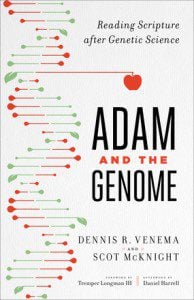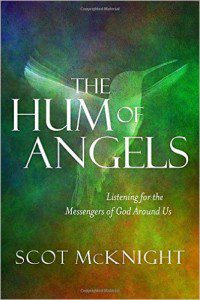Most children, Asher Svidensky says, are a little intimidated by golden eagles. Kazakh boys in western Mongolia start learning how to use the huge birds to hunt for foxes and hares at the age of 13, when the eagles sit heavily on their undeveloped arms. Svidensky, a photographer and travel writer, shot five boys learning the skill – and he also photographed Ashol-Pan.
“To see her with the eagle was amazing,” he recalls. She was a lot more comfortable with it, a lot more powerful with it and a lot more at ease with it.”…
He describes Ashol-Pan as a smiling, sweet and shy girl. His photographs of her engaging in what has been a male activity for around 2,000 years say something about Mongolia in the 21st Century.
If you are in Lake County and want to eat some good BBQ, check out Big Ed’s BBQ.
I like this part in Kermit’s post about Bubba Watson: (by the way, my friend Kermit Zarley helped start the PGA Tour Bible Study, and he’s full of stories about faith on tour).
He grew up in Bagdad, Fla., as one of the good guys: “Didn’t cuss, didn’t cheat, didn’t steal, didn’t lie, didn’t drink, didn’t do drugs,” he said. “I was doing the right things but I didn’t know what that meant.”
It wasn’t until his senior year in high school when two twin neighbor girls, from the house directly behind his, invited Watson to their youth group. He went and found a place where he belonged.
“The girls asked me to go to church,” he said. “And after a few times going I realized this is what I wanted to do. This is truth here. And I gave myself to the Lord.”
But with all the pressures of college golf, especially on the weekends, it wasn’t until 2004 that Watson became serious about his commitment to Christ at the University of Georgia. He began dating Angie Ball (former WNBA player) and the two began living for God as a couple.
“We wanted to be Christ followers,” Watson said. “We wanted to do the right thing. We started turning to the Lord for our decisions.”
The couple married in September 2004 and were both baptized later that year, the day after Christmas: “I would say 2004 was my true time of becoming a Christian,” Watson said, “and shaping me into the man I am today.”
Jeni Rogers, the kind of teacher we all want to have:
After several minutes, one of her 24 students, a boy, eased up to her the way fifth-grade boys do, looked her in the face and said, “I’m so glad you’re here. I love you so much.”
And suddenly Jeni Rogers, a teacher known throughout her school community for her ability to build connections based on mutual respect with her students, their parents and her peers, felt it all pay off.
The teacher who has built a career by building confidence in others, by knowing exactly what motivates them and how to push them to excel, by demonstrating the importance of caring, had come face to face with a student who not only learned those lessons, but instinctively knew how to apply them.
“It was,” she says now, “like a gift from God.”
Funny she should say that, because after almost 30 years in Prairie classrooms, many of the folks she has come in contact with feel Rogers is something of a gift herself.
“I cannot do justice in words to express my gratitude for the passion, commitment and excellence of Jeni Rogers,” parent Jennifer Curtin wrote in one of many emails the Daily Herald received nominating Rogers as a teacher worth celebrating.
Curtain said her son was in Rogers’ class and she hopes her daughter will be, too.
“She changed my child for the better, and we feel absolutely blessed to have had her in our lives,” Curtain wrote. “Jeni Rogers is a diamond among gems in our Naperville Unit District 203 school district team.”
William Hurlbut, at Big Questions, addresses what makes human distinct:
In the felicitous phrase of Benedict Ashley, the human person is “embodied intelligent freedom.” Conceived in this way, no single capacity or function defines the essence of human nature. Rather, the full human person, body, soul and spirit, forms an irreducible psychophysical unity of lived experience within the dynamic journey of historical being.
Our particular form of embodiment: upright posture, free swinging arms, and fully formed hands with opposable thumb, the range and cross referencing of our senses, including our highly refined sense of sight—all of these extend our reach and realm, allowing a knowing and accurate encounter with the world and a freedom for creative and constructive action within the world. Our furless face, with thirty fine-tuned muscles of expression and vocal articulation, provide the means of intersubjective relationality, social communication and cooperation, allowing cultural transformation and the transmission of accumulated knowledge. And our cognitive capacities for perception, analysis, interpretation and productive imagination, allow a coherent and comprehensive rationality that penetrates to the principles of cosmic order. All of these qualities and capacities combine to make the human being a creature of a radically distinct nature, not simply a difference of degree, but a difference of kind. Unlike animals with a limited repertoire of perception and response, we are adapted for adaptability, open in flexibility and freedom within the world.
But this embodied intelligence, and the freedom it implies, comes with a danger unique to the human species. Sensitive and self-aware, open and indeterminate, we are acutely conscious of the ethical and spiritual dimensions of our lives. Yet, terrified by death and driven by our natural appetites and ambitions toward an imagined ideal of perfect bodies and perfect minds, we are drawn forward by the seductive promise of technological self-transformation….
It is a beautiful development of history that the words human and humility share a common root in the Latin ‘humus’ meaning earth or soil. Fashioned from the dust of the earth, given life by the very breath of God, and rescued and restored by the free gift of grace, we are radiant with possibility. Unique among creatures, we behold with wonder the majesty of the Creator, and bow before him in worship and praise— humility, gratitude, and abiding faith; these are the true marks of human distinction.
First female pastor and Baptists:
A North Carolina church credited with opening doors for women in ministry by ordaining the first Southern Baptist woman to the gospel ministry 50 years ago lifted its own stained-glass ceiling April 6 by choosing a female pastor. Members of Watts Street Baptist Church in Durham, N.C., voted unanimously to extend a call as senior minister to Dorisanne Cooper, currently pastor of Lake Shore Baptist Church in Waco, Texas. On Aug. 9, 1964, Watts Street ordained Addie Davis, a 1963 graduate of Southeastern Baptist Theological Seminary from Covington, Va., to the ministry….
Opportunities for women in ministry increased during the 1970s, and by the early 1980s Southern Baptist seminaries encouraged women feeling a call to preach. Roy Honeycutt, president of Southern Baptist Theological Seminary, wrote a tract titled Affirming Women in Ministry in 1984.
The climate changed with a debate over the inerrancy of Scripture beginning in 1979. The Southern Baptist Convention adopted a resolution opposing women’s ordination in 1984….
The Baptist Faith and Message was amended in 1998 to declare “a wife is to submit herself graciously” to her husband and again in 2000 to clarify, “While both men and women are gifted for service in the church, the office of pastor is limited to men as qualified by Scripture.” Disenfranchised moderates withdrew from the battle to control the SBC to form the Cooperative Baptist Fellowship in 1991 around principles including support for women in ministry. Opportunities for female pastors have increased slowly but steadily in CBF churches.
Pam Durso, executive director of Baptist Women in Ministry, now lists 157 women identified as pastor or co-pastor of churches affiliated with the CBF or in state conventions located in the South. Durso said it is no longer an “oddity” for a Baptist church in the South to call a woman. She said she is particularly encouraged by the fact that female ministers like Cooper, with more than 11 years in pastoral experience, are now finding a second church.
Doug Glanville story, hold on:
It was an otherwise ordinary snow day in Hartford, Connecticut, and I was laughing as I headed outside to shovel my driveway. I’d spent the morning scrambling around, trying to stay ahead of my three children’s rising housebound energy, and once my shovel hit the snow, I thought about how my wife had been urging me to buy a snowblower. I hadn’t felt an urgent need. Whenever it got ridiculously blizzard-like, I hired a snow removal service. And on many occasions, I came outside to find that our next door neighbor had already cleared my driveway for me.
Never mind that our neighbor was an empty-nester in his late 60s with a replaced hip, and I was a former professional ballplayer in his early 40s. I kept telling myself I had to permanently flip the script and clear his driveway. But not today. I had to focus on making sure we could get our car out for school the next morning. My wife was at a Black History Month event with our older two kids. The snow had finally stopped coming down and this was my mid-afternoon window of opportunity.
Just as I was good-naturedly turning all this over in my mind, my smile disappeared.
A police officer from West Hartford had pulled up across the street, exited his vehicle, and begun walking in my direction. I noted the strangeness of his being in Hartford—an entirely separate town with its own police force—so I thought he needed help. He approached me with purpose, and then, without any introduction or explanation he asked, “So, you trying to make a few extra bucks, shoveling people’s driveways around here?”
All of my homeowner confidence suddenly seemed like an illusion.
Yasiel Puig‘s story of getting from Cuba to the LA Dodgers — this is a crazy, crazy story:
Seemingly from the moment Cuban refugee Yasiel Puig showed up at Dodger Stadium out of nowhere, arriving last June unwilling to discuss his unknown background, the talk behind the batting cages has been rife with unprintable rumors.
There were rumors Puig was smuggled out of Cuba by members of a Mexican drug cartel. There were rumors he still owed the smugglers money, and that his life could be in jeopardy. There was talk about Puig being essentially owned by a Miami businessman with a criminal record who hired those smugglers in exchange for 20% of the ballplayer’s future earnings.
Who knew that all those rumors could actually be true? According to a richly researched and chillingly written story by Jesse Katz in the May issue of Los Angeles Magazine, Puig’s journey to Los Angeles was even more harrowing than realized, and continues to be more frightening than imagined.












